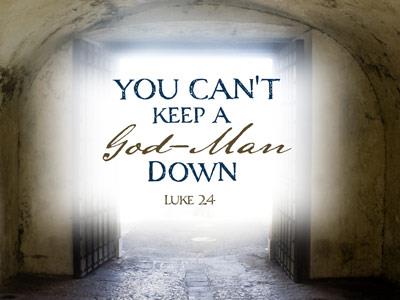-
Unmoved By The Cross
Contributed by Steve Malone on Nov 28, 2017 (message contributor)
Summary: Three reasons why some like the Roman soldiers on the hill at calavry are still umoved by the cross.
You know I’ve spent a lot of time this week – studying and reading about the cross… One article I came across this week, talked about how some churches on their crosses still show Christ on the cross. And how those who do not do so to stress the resurrection and the fact the Jesus is no longer suffering – to underscore the truth that Jesus died once and for all… He is not on the cross anymore. (I’ve always like the empty cross for those reasons)
But this author got me to rethink this alittle… when he made the following statement, “have we thrown the baby out with the bath water… Have we lost something by removing Jesus from the cross… I mean doesn’t our cross look awfully sanitized? Doesn’t it permit us to overlook the pain and agony of that cruel death. To paraphrase the little all lady in the hamburger commercial – “Where’s the blood?”
In the few minutes that remain – I’d like us to consider Jesus on the cross as I share with part of an article I came across this week, it is entitled, A Physician Testifies About The Crucifixion.
After the arrest in the middle of the night, Jesus was next brought before the Sanhedrin and Caiphus, the High Priest; it is here that the first physical trauma was inflicted. A soldier struck Jesus across the face for remaining silent when questioned by Caiphus. The palace guards then blind-folded Him and mockingly taunted Him to identify them as they each passed by, spat upon Him, and struck Him in the face.
In the early morning, battered and bruised, dehydrated, and exhausted from a sleepless night, Jesus is taken across the Praetorium of the Fortress Antonia, the seat of government of the Procurator of Judea, Pontius Pilate. You are, of course, familiar with Pilate’s action in attempting to pass responsibility to Herod. Jesus apparently suffered no physical mistreatment at the hands of Herod and was returned to Pilate. It was in response to the cries of the mob, that Pilate ordered Bar-Abbas released and condemned Jesus to scourging and crucifixion.
There is much disagreement among authorities about the unusual scourging as a prelude to crucifixion. Most Roman writers from this period do not associate the two. Many scholars believe that Pilate originally ordered Jesus scourged as his full punishment and that the death sentence by crucifixion came only in response to the taunt by the mob that the Procurator was not properly defending Caesar against this pretender who allegedly claimed to be the King of the Jews.
Preparations for the scourging were carried out when the Prisoner was stripped of His clothing and His hands tied to a post above His head.
The Roman legionnaire steps forward with the flagrum (or flagellum) in his hand. This is a short whip consisting of several heavy, leather thongs with two small balls of lead attached near the ends of each. The heavy whip is brought down with full force again and again across Jesus’ shoulders, back, and legs. At first the thongs cut through the skin only. Then, as the blows continue, they cut deeper into the subcutaneous tissues, producing first an oozing of blood from the capillaries and veins of the skin, and finally spurting arterial bleeding from vessels in the underlying muscles.

 Sermon Central
Sermon Central



